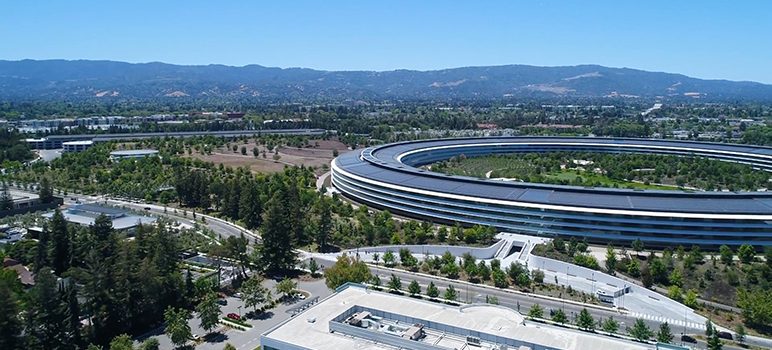For staffers at the Cupertino planning department, explaining the city’s byzantine zoning rules to residents is a challenge. For residents, it’s even harder understanding them.
Driven by an influx of wealthy residents looking to expand or rebuild their homes, the city of Cupertino has turned to software to make zoning easier to grasp—and take the load off city planners who typically have to explain it.
Using a 3D modeling program courtesy of Miami-based software company Gridics, residents can now see how their homes can change within the limits of Cupertino’s zoning regulations. Instead of spending time combing through complicated rules or drawing makeshift diagrams on paper, city planners can pull up a 3D model of what residents can do and adjust it to fit potential designs on the spot. Then, the program generates a printout of the applicable guidelines and permits needed.
Cupertino has seen a growing number of wealthy residents looking to expand existing homes or tear down older properties to build new ones. The city has gotten more desirable for highly paid tech workers, as residents seek to cut down commute times and live in a healthy school district. Apple, most famously, is based in Cupertino. According to Zillow, the median home price in the city is $2.2 million, which is even much higher than the median for the entire Bay Area.
Teri Gerhardt, a manager in Cupertino’s department of innovation and technology, told San Jose Inside that planning department staff found it noticeably difficult to help residents understand zoning. Explaining how zoning regulations apply to a property took so much time and labor, it overwhelmed city planners on a daily basis.
Right now, the planning department typically sees anywhere from five to 10 people looking to redevelop their homes per day, Gerhardt said.
“Zoning typically doesn’t translate well,” Gerhardt said. “Planners felt like residents left the counter even more confused.”
The problem was so acute that three years ago Cupertino sought to build its own 3D modeling software from scratch with another vendor’s help. But other companies struggled with the task, Gerhardt said. Eventually, the city found Gridics, the only company with the know-how to make what the city was looking for.
“All you have to do is type in an address or click on a parcel on a map,” said Jason Doyle, CEO of Gridics. “We’re improving the overall experience of citizens dealing with the city to get their questions answered.”
While city governments are notoriously slow to adopt new technology, the Gridics deal came together in months. The city paid $13,000 up front and will continue paying $12,000 per year for support, software maintenance and upgrades.
“I think other cities do kind of hold back and wait for more cities to start using technology,” she said. “But for us it was kind of a no-brainer because we saw the need and there was technology out there ... so we chose to embrace it.”


So what you are saying is that even in the public sector, there is an effort to replace people (city planners) with automation (computer program to help citizens). That’s encouraging. Maybe while the computer is helping people, the planners will have time to update the antiquated zoning code so they don’t need a computer to explain it to wealthy people.
Would Cupertino ever consider a zoning code that’s not impossible to understand and allows adequate housing to be built?
The rich rule and obviously have taken over the gov’t offices of Cupertino. If you have bundles of money and want your way just show up at Cupertino City Hall.